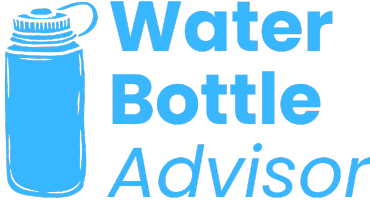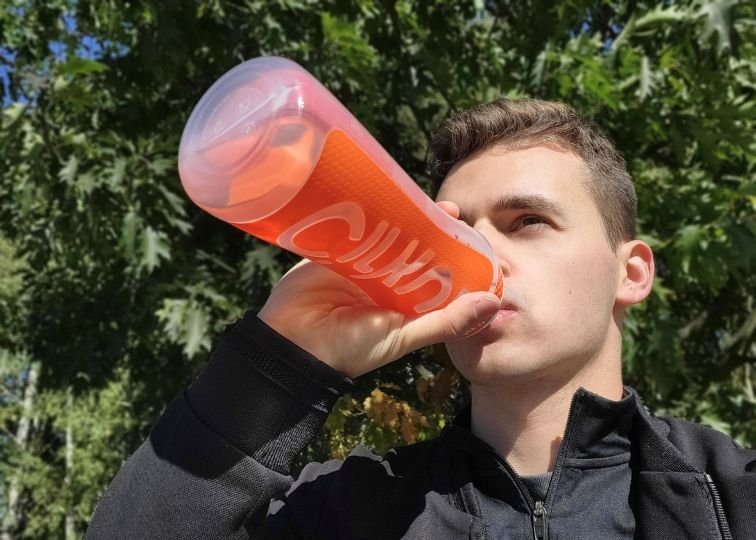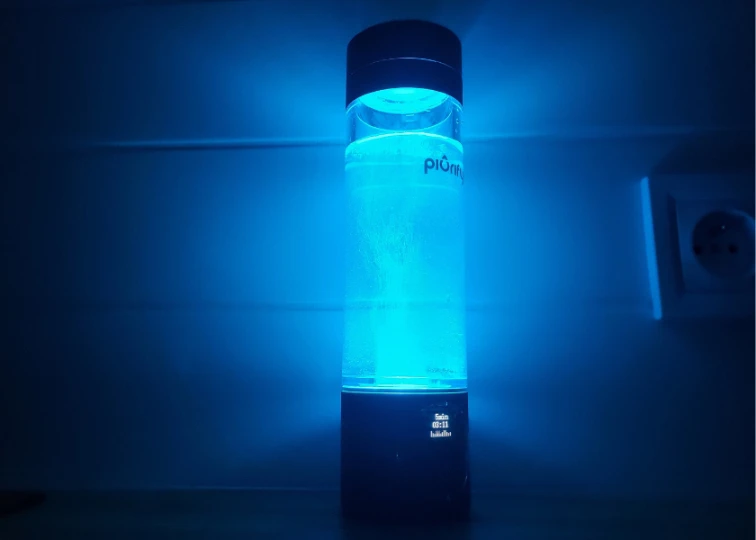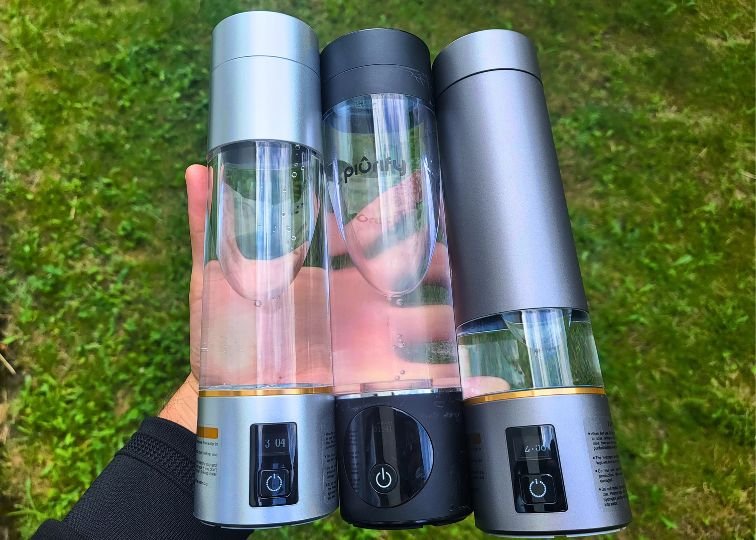If I worked in Cirkul’s customer service, I’d probably be exhausted from answering the same question all day: “Is Cirkul healthy?”
Cirkul is basically water with flavoring. And replacing soda or sugary drinks with it is almost always a healthier choice.
Personally, Cirkul helped me quit sugary drinks for good, a habit I’d struggled with since childhood. I feel better because of it.
Of course, plain water is still the best choice. But let’s be realistic: it’s not that simple for everyone. Some people grew up in places where tap water tasted like dirt or chlorine and never developed a taste for it. Others just can’t stand the flavor, no good reason required.
A UK poll of 2,000 adults highlighted this perfectly: 43% find water “boring”, 9% actively dislike it, and 40% rely on tea as their main source of hydration, with coffee and fizzy drinks also in heavy rotation.
Across the pond, about 47% of U.S. adults drink less than the recommended daily amount of water, often substituting other beverages instead.
For people like that (myself included) Cirkul offers a way to leave sugar behind while still enjoying a tasty drink. The alternative sweeteners it uses are considered healthier than sugar, which is why Cirkul can reasonably be considered “healthy” in moderate amounts.
With that settled, let’s discuss the ingredients and tackle the biggest point of controversy: sweeteners.
Does Cirkul Have a Lot of Sugar? Ingredients Breakdown
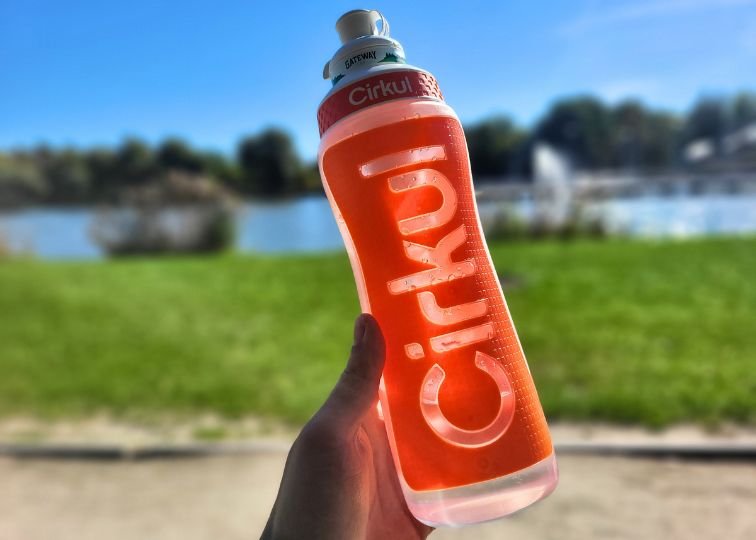
Cirkul’s flavored water cartridges are designed to be sugar-free. Instead, they utilize sweeteners like sucralose and, in some cases, stevia to provide sweetness without adding sugar or calories.
Cirkul’s flavored water cartridges typically contain the following ingredients:
- Filtered Water: The base of the beverage.
- Natural Flavors: Derived from natural sources to impart the desired taste.
- Citric Acid: Adds tartness and acts as a preservative.
- Lactic Acid: Enhances flavor and preserves freshness.
- Sucralose: A calorie-free sweetener used to provide sweetness without sugar.
- Potassium Bicarbonate: Adds electrolytes and balances acidity.
- Phosphoric Acid: Adds acidity and enhances flavor.
- Niacinamide (Vitamin B3): Supports metabolism and skin health.
- Sodium Benzoate & Potassium Sorbate: Preservatives used to maintain freshness.
- Calcium Pantothenate (Vitamin B5): Supports energy metabolism.
- Pyridoxine Hydrochloride (Vitamin B6): Important for brain development and function.
- Cyanocobalamin (Vitamin B12): Essential for nerve function and blood formation.
These ingredients work together to create a flavored beverage that’s free from sugar and calories, while also providing added vitamins and electrolytes.
Here’s the ingredients list from my “Gateway” flavor pack:
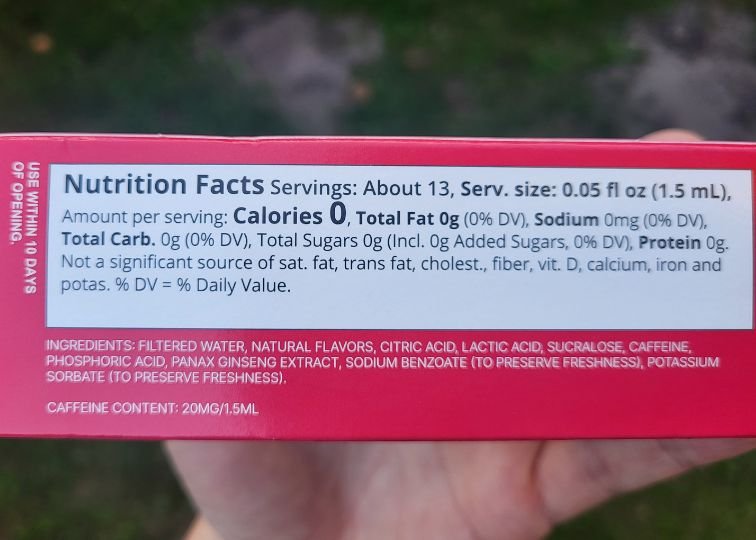
Does Drinking Cirkul Count As Water?
Yes, drinking Cirkul does count toward your daily water intake.
Cirkul cartridges are mostly water with a small amount of flavoring, electrolytes, and vitamins. There’s no sugar, and the liquid itself is water. This means the body hydrates the same way it would with plain water.
Whether you drink plain water or Cirkul, the fluids help:
- Maintain body temperature
- Support digestion and metabolism
- Prevent dehydration
The small additions like electrolytes or vitamins don’t interfere with hydration and they may even enhance it slightly in some cases.
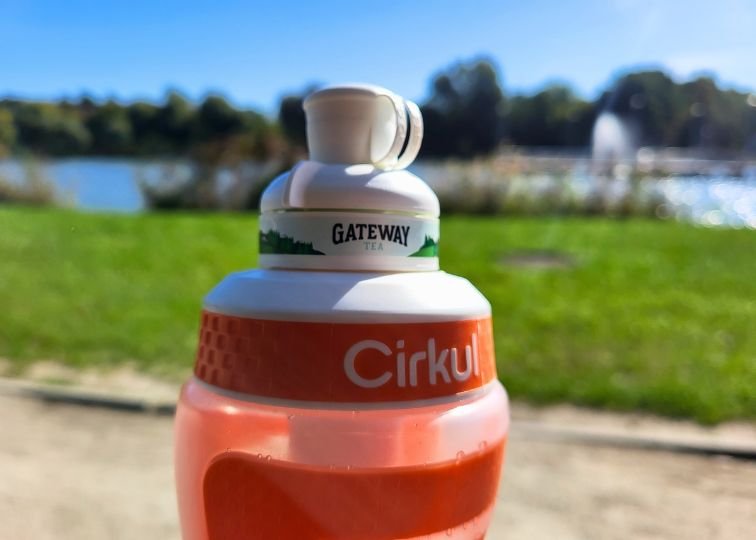
Sweeteners
As we’ve seen in the ingredients breakdown, Cirkul uses non-nutritive sweeteners to give its flavored water a pleasant taste without adding sugar or calories. The two primary sweeteners are sucralose and stevia, depending on the flavor.
Stevia
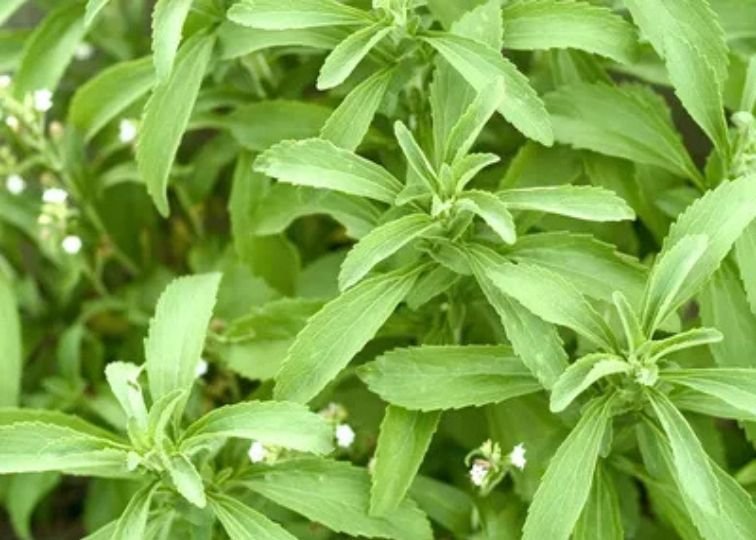
Stevia is a natural, zero-calorie sweetener derived from the leaves of the Stevia rebaudiana plant. Unlike artificial sweeteners such as sucralose, stevia comes from a plant source, making it a preferred choice for those seeking a more natural, plant-based alternative to sugar.
It’s incredibly sweet, roughly 200–400 times sweeter than table sugar, depending on the extract, yet it contributes virtually no calories. This makes it an attractive option for weight management and calorie-conscious diets.
Stevia also stands out for its blood sugar neutrality. It does not raise glucose or insulin levels, making it suitable for people with diabetes or anyone monitoring carbohydrate intake. In other words, you can enjoy sweetness without the metabolic consequences of sugar.
And like sucralose, stevia is non-cariogenic, meaning oral bacteria don’t metabolize it into acids that cause cavities. Swapping sugar for stevia can help protect your teeth while still satisfying a sweet tooth.
From a safety standpoint, stevia has strong endorsements from major health authorities, including the FDA and EFSA. Most ingested stevia passes through the digestive system largely unchanged, with minimal absorption, and is excreted without impacting metabolism.
Sucralose
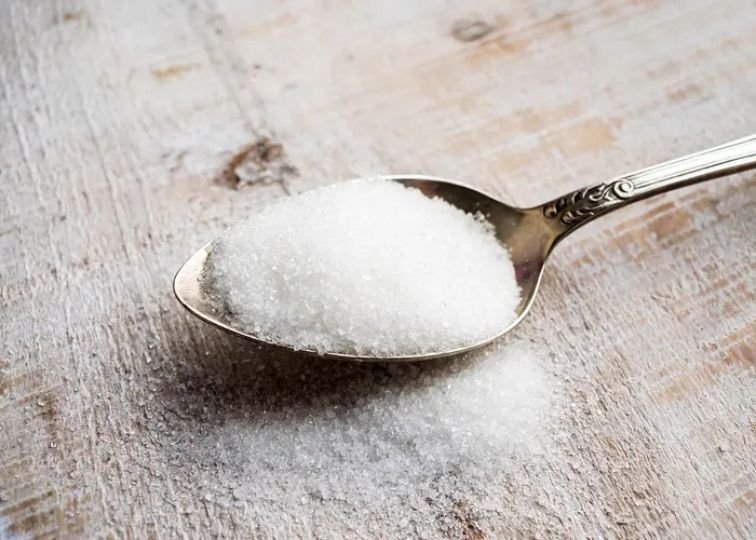
Sucralose is a widely used artificial sweetener, roughly 600 times sweeter than table sugar, and is commonly found in diet sodas, sugar-free candies, and low-calorie baked goods. It’s often promoted as a healthier alternative to sugar because it contains no calories and has minimal impact on blood sugar levels.
This makes sucralose particularly useful for people with diabetes or anyone monitoring their carbohydrate intake, as it does not significantly affect blood glucose or insulin levels. In other words, it allows you to enjoy sweet flavors without the typical sugar spike.
Another benefit is dental health. Because sucralose is not metabolized by oral bacteria, it doesn’t contribute to tooth decay like sugar does. You can satisfy your sweet tooth while protecting your teeth at the same time.
From a metabolic perspective, most ingested sucralose passes through the body unchanged, being excreted in feces. Only about 11–27% is absorbed in the gastrointestinal tract, and most of that is removed by the kidneys through urine. Only a small fraction, roughly 20–30% of what is absorbed, is metabolized.
Potential Health Risks of Sucralose
While sucralose offers the advantage of sweetness without sugar or calories, we should consider potential risks associated with high consumption too.
Research in mice has shown that very high doses of sucralose can suppress T-cell activity, which may impair immune system function. Although these results are from animal studies, they suggest that excessive intake could have implications for human immune health.
Other studies have raised concerns about possible effects on gut and cellular health. Sucralose has been linked to DNA damage, increased gut permeability (sometimes referred to as “leaky gut”), and changes in gene activity related to inflammation and cancer.
Additionally, a study published in Neurology observed that higher consumption of certain artificial sweeteners, including sucralose, was associated with faster cognitive decline. Participants with higher intake experienced a 62% faster decline in memory and verbal fluency compared to those with lower intake.
While these findings do not suggest that moderate use of Cirkul is inherently dangerous, they highlight the importance of moderation and awareness when consuming beverages containing sucralose.
Does That Mean We Should Avoid Cirkul?
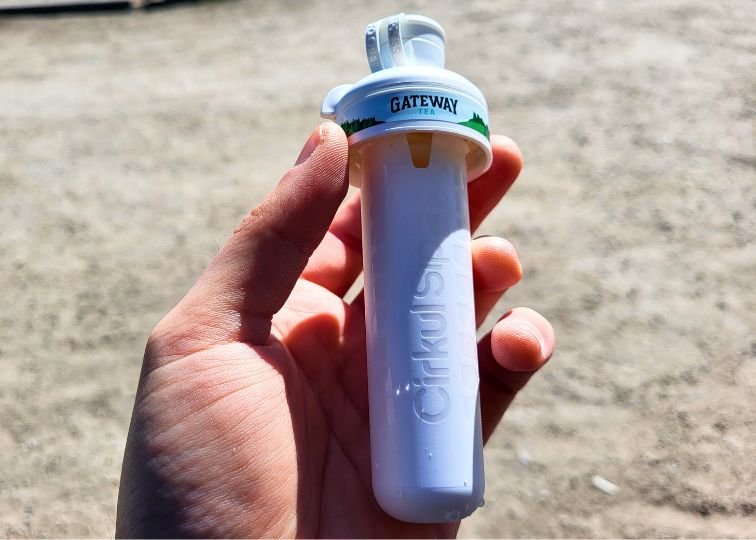
Despite these concerns I mentioned above, it’s a fact that sucralose has been approved by regulatory bodies like the FDA, which reviewed over 110 studies before deeming it safe for consumption. The acceptable daily intake (ADI) is set at 5 mg per kilogram of body weight.
For a person weighing 70 kg (approximately 154 lbs), this equates to 350 mg of sucralose per day. Even if a Cirkul cartridge contained 100 mg of sucralose (a higher estimate), consuming one cartridge would still be well within the safe daily limit.
Verdict: Is Cirkul Healthy?
Cirkul is a healthy choice when consumed in moderation, and that’s how I personally use it. While Cirkul offers 10 levels of flavor intensity, I rarely go beyond the 5th level and usually stick to level 3. This way, I enjoy flavored water while keeping the amount of sweeteners low, which I consider the healthiest way to use Cirkul.
It’s important to remember that artificial sweeteners, including sucralose, haven’t been studied as extensively as sugar. Just because a beverage is “sugar-free” doesn’t mean it’s safe to consume in unlimited quantities. Moderation is key – enjoy Cirkul as a helpful tool to stay hydrated, but don’t rely on it as a free pass to drink endless flavored water.
If you enjoy Cirkul but prefer to avoid sucralose, the company also offers “Puressence”, an unsweetened flavor option that adds a subtle hint of taste to your water without any sweeteners.
Sources
https://www.thesun.co.uk/health/36259455/brits-ditch-water-tea
https://www.nature.com/articles/s41586-023-05801-6
https://www.health.com/artificial-sweeteners-faster-cognitive-decline-11804904
https://www.fda.gov/food/food-additives-petitions/aspartame-and-other-sweeteners-food

Jeremiah Kowalski
Hey there! I’m Jeremiah, the guy behind WaterBottleAdvisor.com. I used to have a bad habit of guzzling sodas while working remotely, but thanks to reusable water bottles, I’ve turned my hydration game around. After testing over 50 bottles, I’m here to help you find the perfect one to make staying hydrated a joy, not a chore. When I’m not reviewing bottles, you’ll likely find me scaling steep trails around the world, trusty water bottle in hand.
